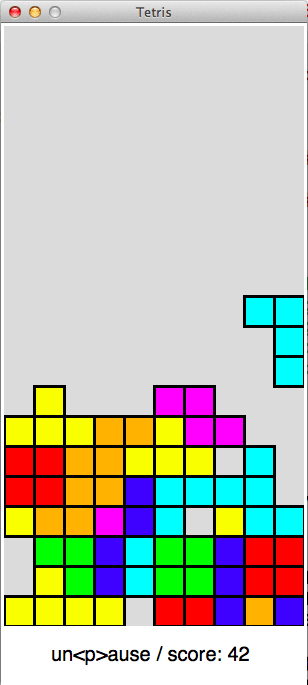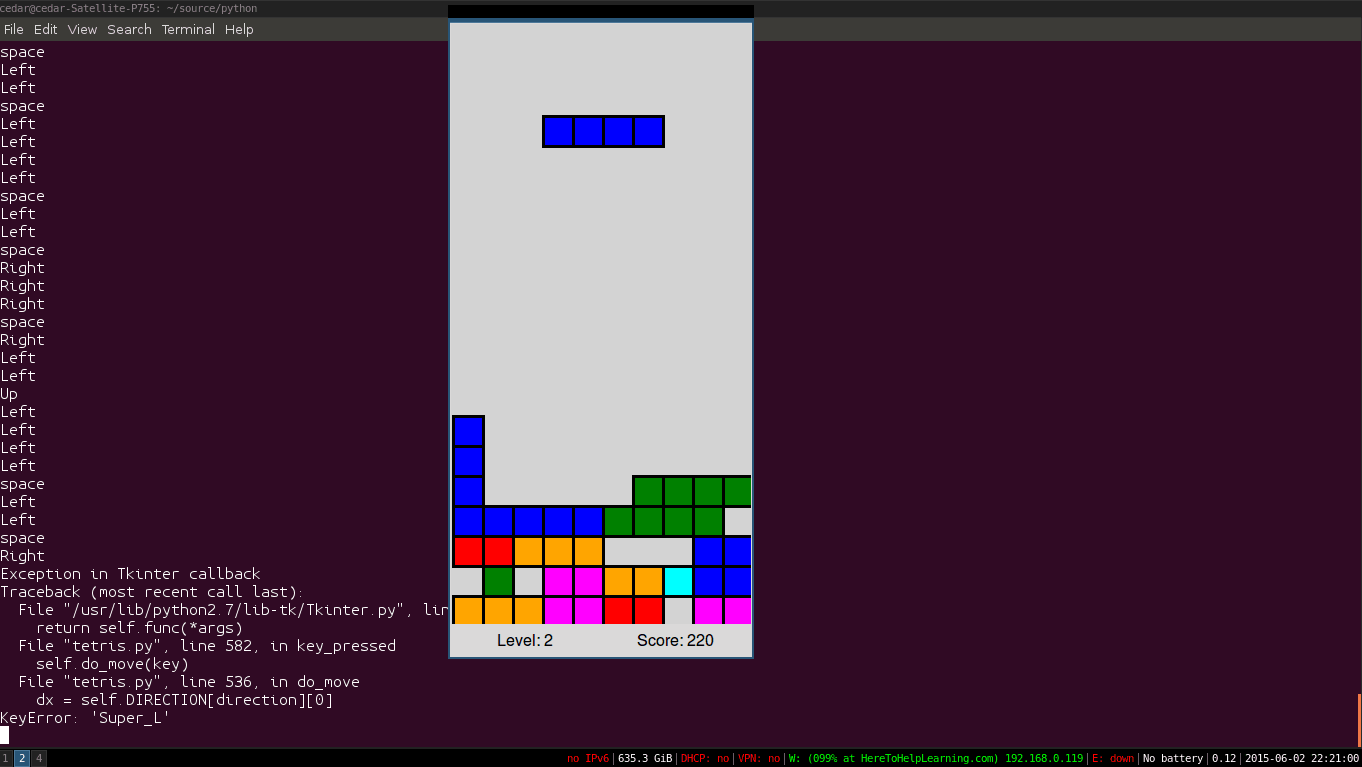@vijolica9 I used the code @Glenn had posted as a starting point for the “F” shape in four rotation positions. I am not sure if this on the right track or if what I am doing will be a mess later… But I will be working on the other shapes anyway.
Here is @Glenn’s code that I modified:
# tetris.py mod from @Glenn code
# May 18, 2015
from graphics import *
### function that draws an F shape on the board
### x, y is board location, in pixels, of upper left corner of the shape
### x is distance in pixels from left margin
### y is distance in pixels from top margin
### position is whether it is up, down, right, or left
def draw_F_shape(x, y, position):
BLOCKSIZE = 50
if position == "down":
for i in range(3):
rect = Rectangle(Point(x + BLOCKSIZE * i, y), Point(x + BLOCKSIZE * i + BLOCKSIZE, y + BLOCKSIZE))
rect.setFill("red")
rect.draw(win)
rect2 = Rectangle(Point(x, y + BLOCKSIZE), Point(x + BLOCKSIZE, y + BLOCKSIZE + BLOCKSIZE))
rect2.setFill("red")
rect2.draw(win)
elif position == "left":
for i in range(3):
rect = Rectangle(Point(x, y + BLOCKSIZE * i), Point(x + BLOCKSIZE, y + BLOCKSIZE * i + BLOCKSIZE))
rect.setFill("blue")
rect.draw(win)
rect2 = Rectangle(Point(x - BLOCKSIZE, y), Point(x, y + BLOCKSIZE))
rect2.setFill("blue")
rect2.draw(win)
elif position == "up":
for i in range(3):
rect = Rectangle(Point(x + BLOCKSIZE * i, y), Point(x + BLOCKSIZE * i + BLOCKSIZE, y + BLOCKSIZE))
rect.setFill("green")
rect.draw(win)
rect2 = Rectangle(Point(x + BLOCKSIZE * i, y - BLOCKSIZE), Point(x + BLOCKSIZE * i + BLOCKSIZE, y))
rect2.setFill("green")
rect2.draw(win)
elif position == "right":
for i in range(3):
rect = Rectangle(Point(x, y + BLOCKSIZE * i), Point(x + BLOCKSIZE, y + BLOCKSIZE * i + BLOCKSIZE))
rect.setFill("yellow")
rect.draw(win)
rect2 = Rectangle(Point(x + BLOCKSIZE, y + BLOCKSIZE * 2), Point(x + BLOCKSIZE * 2, y + BLOCKSIZE * 3))
rect2.setFill("yellow")
rect2.draw(win)
win = GraphWin('Rect', 800, 500)
draw_F_shape(50, 50, "down")
draw_F_shape(300, 50, "left")
draw_F_shape(400, 100, "up")
draw_F_shape(600, 50, "right")
win.mainloop()

 ) from
) from 

 so you can get some real work done.
so you can get some real work done.

